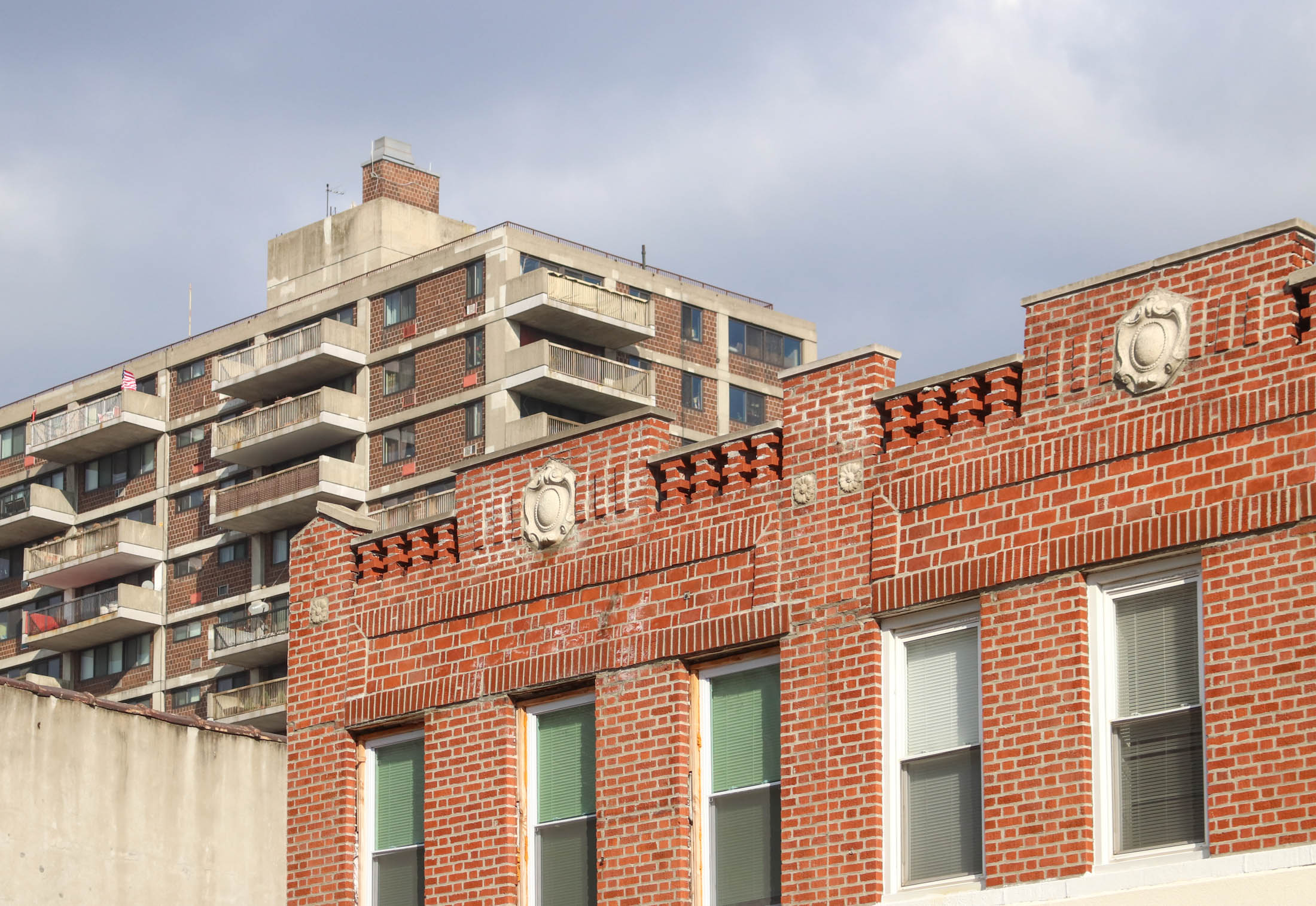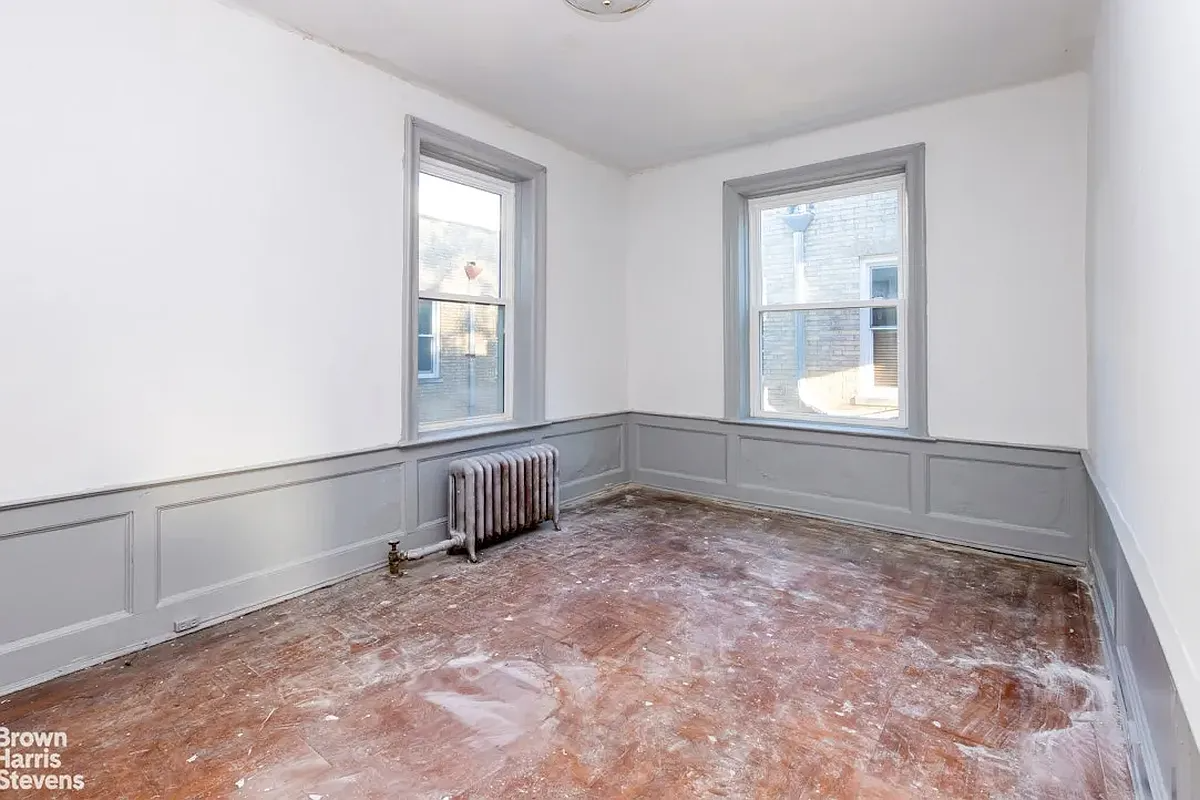Bushwicker Makes Top Ten Landlord List
July 5, 2006 — David Melendez owns a swath of dilapidated, vermin-infested, crime-ridden slums hidden on a forgotten block of Jefferson Street in Bushwick. The surrounding area is gentrifying, and just a few blocks away from Melendez’s buildings, new condos are selling for six figures. In contrast, rats rule the apartments of Melendez’s mostly Mexican…
July 5, 2006 — David Melendez owns a swath of dilapidated, vermin-infested, crime-ridden slums hidden on a forgotten block of Jefferson Street in Bushwick. The surrounding area is gentrifying, and just a few blocks away from Melendez’s buildings, new condos are selling for six figures. In contrast, rats rule the apartments of Melendez’s mostly Mexican and Ecuadorian tenants, and drug addicts get in through the unlocked doors, using the hallways in which to get high, while the tenants’ infants struggle to sleep through unheated winters. Melendez’s four buildings at 253, 255, 258, and 260 Jefferson have a total of 473 pending code violations. He appears to be in no rush to fix them: HPD has recently made 49 emergency repairs to those buildings and charged Melendez $23,029.
More on the link…
NYC’s 10 Worst Landlords [Village Voice]





Victor Caletre has been deported. That is hard to do in New York city where illegal aliens have as many or more rights than its legal citizens. Generally speaking, you have to commit a crime. Caletre, along with his partner in crime, Juan Haro, was a founder of the sham organization Movement For Justice in El Barrio. This organization’s claim to fame is its captive reporter, Albor Ruiz, who writes biased, distorted and untruthful stories for the Daily News under the guise of reporting the news. They are further supported by another sham organization, Housing Here and Now, which has its own gang of reporter lap dogs. They have tapped into an activist writer for El Diario whose daughter has written the same kind of rhetoric for the Village Voice. Shamefully, they also have a New York City Councilwoman in their pocket, East Harlem’s Melissa Mark Viverito, the wealthy German socialite, who lives in a $1,000,000 townhouse, masquerading as an Hispanic from the neighborhood, and whines about gentrification. In his article about alleged abusive landlords, Ruiz seeks to characterize the Movement’s fight against landlord Steven Kessner as a Samson versus Goliath type of battle. The reality is that the Movement for Justice in El Barrio is a gang of thugs who are victimizing their own people. Housing Here and Now is no more than an outlet for rants against landlords in general. What Caletre and Haro are doing is enabling illegal immigrants to be crowded into small apartments like herds of sheep. While Victor Caletre was falsely crusading against Steven Kessner, he was renting an apartment from him, in which he did not live. Instead he in turn rented his small two bedroom apartment to nine adults who paid him rent. In ranting and raving about abusive landlords, these organizations are seeking to divert attention from their shameful pursuit of the almighty dollar. Steven Kessner, who is one of the victims here, has only been attempting to clean up his building and reduce the unlawful overcrowding. Since that would have an adverse impact on the pocket books of the people who are preying on these unfortunate immigrants, they are desperately trying to stay in business, any way that they can. Victor Caletre is out of business. Hopefully, Haro will be soon, Steven Kessner will win his fight against illegal overcrowding and the media circus will end, or at least move on to villifying someone else.
There are undoubtedly a large number of bad landlords in New York City. One would think that the Voice could find them and write about them instead of playing patty cake with non profit groups, rabble rousers and local politicians. Every year it comes out with its 10 WORST LANDLORDS, not to do a service to the public but to sell newspapers. The Village Voice is of course, known for its propensity toward attention grabbing headlines and lurid photographs and this article is no different. All one has to do to take its measure is to look at who advertises and pays their bills. Maybe what is needed is an article about the 10 WORST NEWSPAPERS in terms of how many X rated ads offering illegal services they have. Back to the issue at hand, we could perhaps all agree that HUD is the country’s number one worst landlord; that’s a given. However, without speaking for the rest, they really missed the mark by naming Steven Kessner. You can chalk it up to a reporter losing her objectivity and allowing herself to be led around by the nose by a tenant group with a hidden agenda.
Although the article pays lip service to Kessner’s claim that overcrowding apartments is the issue, it is glossed over and buried in the details, for instance, the photo in the article of mold on a tenants bathroom ceiling. What is not being said is that if 20 people live in an apartment with one bathroom, each showering once or twice a day, the ceiling never dries and mold grows. There is nothing that a landlord can do to prevent that except to try and reduce the occupancy load in the unit. Steven Kessner is trying to do that and has opened himself up as a target for the politically connected non profit groups that support the undocumented alien population in New York. Isn’t it strange that all of the articles written about Kessner cite the same couple of tenants? Although this article mentions that he has almost 60 buildings in East Harlem with over 1200 units, Kessner’s inclusion in the article is based on two tenants in two buildings. The Voice reporter makes sure to mention that Steven Kessner has over 3,000 HPD violations. Again, she fails to mention that these violations are spread over 60 buildings or that most of them have been abated but are not removed from record because the city inspectors can’t gain access to the apartments. Nor does she mention that a majority of the violations that are left are in overcrowded apartments. The article starts off by quoting Steven Kessner as saying “I fix it, they break it.†However, it fails to back up that quote with the evidence that was given to the reporter, instead, using alleged conditions in a couple of apartments to build a case for a two tier portfolio of trophy buildings and buildings dedicated to unfortunate immigrants. The conclusion of this article was written first and the rest was then filled in. Shame on the Village Voice. How about this for your next article….NIGHTMARE TENANTS that destroy apartments and then insist that the landlord has an obligation to repair them.
“He projects that completely deregulating the New York housing market would result in an average increase of $8 a month in rent, city-wide.”
That hardly qualifies as rents “Skyrocketing” (per post by: cobblestoner).
And what about all the associated costs of enforcing Rent Regulations? How much tax payer money does NYC spend to keep regulations (that were supposed to be temporary back durring WWII) enforced. If rent control were eliminated, the money spent (running the regulations) could put into housing assistance voucher (or some sort of program) for the people that TRULY need help with their rent.
That way individual landlords would not have to subsidies peoples rent, and new comers to NYC would not be shut out of a program that only benefits those who were luck enough to land a rent controlled/rent stabilized apartment.
per http://www.manhattan-institute.org/html/cr_34.htm
“Report finds that rent stabilization provides little benefit to residents of the outer boroughs and the lower and middle-income neighborhoods of Manhattan, while providing a substantial subsidy only to the residents of the relatively affluent areas of Lower and Mid-Manhattan….
…in the long run, direct government assistance along with deregulation is the favored alternative. Given that rent regulation disproportionately benefits tenants in affluent areas, direct financial assistance to poor and elderly renters is preferable to simply regulating rents.”
And note: I’m a renter, not a landlord. I have lived in a stabilized apartment, but for the last 15 years have been in a market rate apartment. In those 15 years, I had only 2 rent increases of 10% each (both to compensate for higher fuel costs). My landlord only raised rent when THEY had to, not because a law said they had to raise the rent.
If I was living in a rent stabilized/controlled apartment I would have had a larger cumulative % increase in rent.
per: http://www.manhattan-institute.org/html/cr_34.htm
“Between 1993 and 1999, the median monthly rent of stabilized housing citywide increased 24%, while the median rent of unregulated housing increased only 17%.”
And what was the Rent Board 2006 increase? Over 7% I believe.
Rent Controls are not helping all the people they should help, and they should be eliminated in favor of program that provides assistance for ALL poor/elderly NYC residents.
I’d be careful about citing anything from the Cato Institute especially where ideology is inserted for inference.
Look at the above.
(A) Advertised rents in cities with rent control are higher than advertised rents in cities without rent control.
(B) Available rental housing in rent-controlled markets is higher than the median rent versus the unregulated cities and unregulated medians.
Point (A) is a cause-and-effect problem. Are the rents higher than they otherwise would be because of rent control or is rent control a policy implmentation to control rising rents? The author provides no answer.
Point (B) is a similar one. Rent-stabilized apartments are going to be under market pricing. So if you just count rents (which is what a median represents) you will find, unsurprisingly, that the other apartments are priced higher. Not an amazing insight, really.
I can’t claim to be really familiar with this guy, but he seems to have a handle on things and his methodology looks ok: http://www.manhattan-institute.org/html/cr_34.htm
He projects that completely deregulating the New York housing market would result in an average increase of $8 a month in rent, city-wide. Now, he’s generally against rent stabilization, it seems, and argues that it is bad policy as it unduly benefits some people at the expense of others but he does NOT arrive at the conclusion that rent control = higher rents.
Which, if you think about things, if rent control = higher rents then tenants should be arguing for its abolition and landlords for its preservation. Which doesn’t seem to be how it normally shakes out.
So watch out for inference and innuendo. Particularly when it comes from Cato.
See: http://www.cato.org/pubs/pas/pa-274.html
“Although rent controls are widely believed to lower rents, data I have collected from eighteen North American cities show that the advertised rents of available apartments in rent-regulated cities are dramatically higher than they are in cities without rent control. In cities without rent control, the available units are almost evenly distributed above and below the census median. In rent-controlled cities most available units are priced well above the median. In other words, inhabitants in cities without rent control have a far easier time finding moderately priced rental units than do inhabitants in rent-controlled cities.
This is because tenants in the regulated sector tend to hoard their apartments, forcing everyone else to shop only in the shadow market. Thus, rent control is the cause of the widely perceived “housing crisis” in rent-controlled cities”.
-by William Tucker CATO Institute.
We must not forget Joe Mannino…he has to be in the top 15 worst landlords…
Ian-
Correct. If the gov’t changes the rules on you which diminishes the value of your asset after you have purchased it it’s classified as a, “regulatory taking” which is prohibited without just compensation by the Fifth Amendment and Supreme Court precedent.
And also correct that whether or not it is an efficient and proper way to structure a public interest goal is a policy question.
Mateo’s comment makes sense. If you buy the buildings knowing you are subject to the rent stabilization, then presumably, this is reflected in the price you pay for the building.
However, if you purchased pre-1974, then you had stabilization imposed on you by subsequent law. (Mateo, correct?) If this is true, then it is effectively a “taking” – the government depriving you of the value of private property for public good. This is totally permissable, Al, but when the value of you property is decreased by the government, it should compensate you for that.
I totally agree that landlords are members of the public, but this misses my point. Individuals shouldn’t be forced to provide cheap housing without an offsetting compensation. Now, if people do it voluntarily, this is an entirely different story – as Mateo pointed out.
As to whether landlords are able to prey on their tenants, this seems clear enough – and an empirical question, rather than a policy question. Whether the incentives are set up in such a way that this is their “best” option is to maintain their properties, this is policy question. Right?
That makes sense. Thanks.